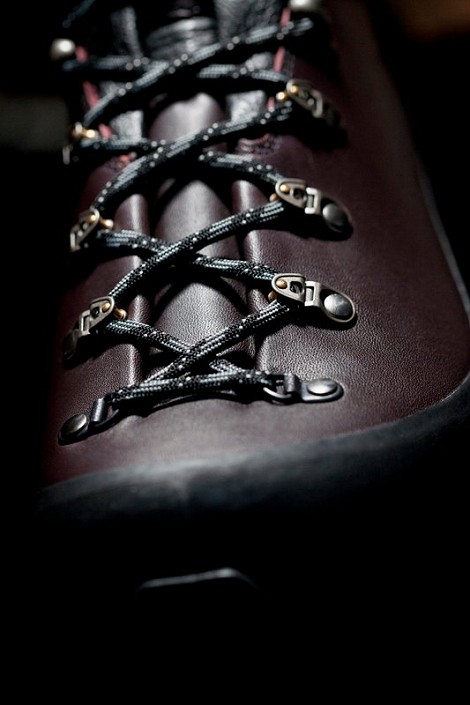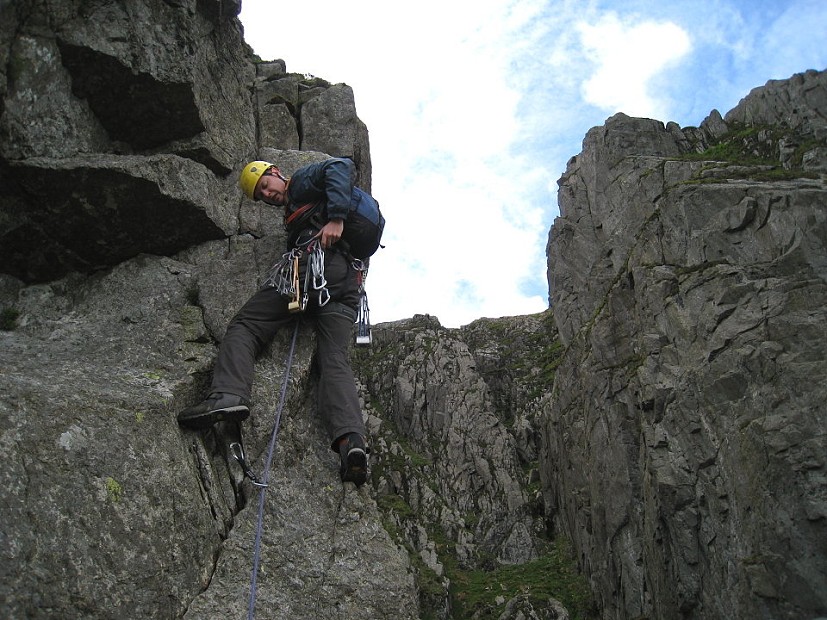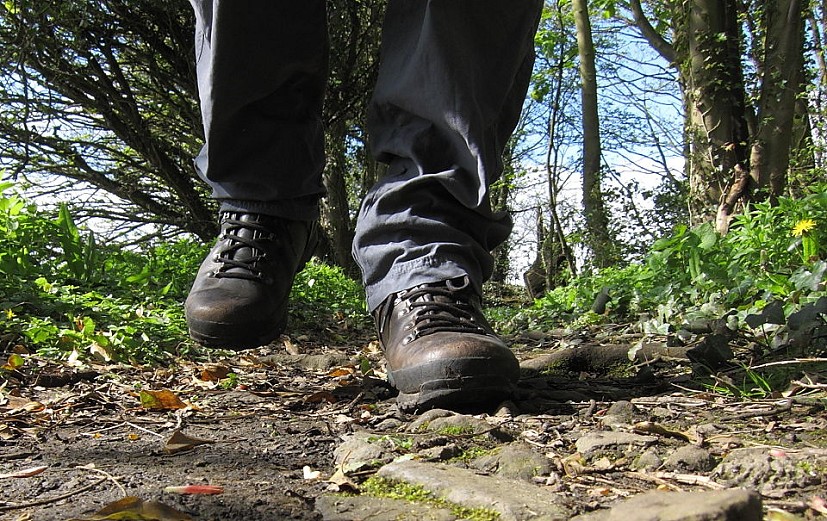Ten Top Tips for Buying Summer Boots
In the market for a new pair of walking boots? This article is aimed primarily at beginners taking their first steps into hillwalking, but even old hands might pick up the odd tip. If you've endured years of ill-fitting boots then it could be time to think again about footwear.
Most hillwalkers own at least one pair of summer boots. Which should you go for? There's a lot of stomping ground between clumpy winter footwear and insubstantial fellrunning shoes, an array of makes and models ranging from fairly stiff all-leather boots that might just about take a walking crampon to featherweight softies that basically amount to a shoe with added token ankle cuff. Should you favour rigid support or lightweight flexibility? Waterproofness or cool breathability? Or maybe you actually prefer fell shoes in summer? But that's another article...
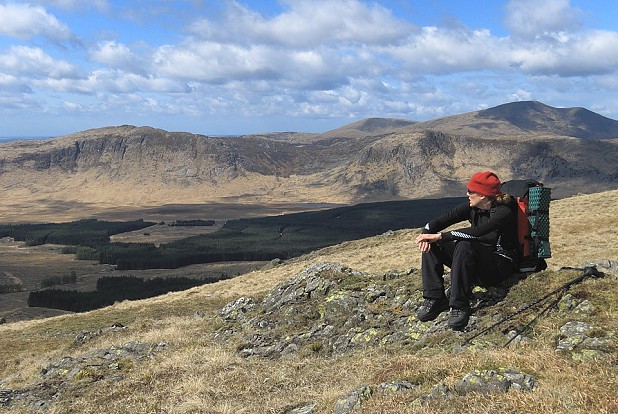
'Fit is the primary consideration when choosing boots, and if you don't get it right then nothing else matters'
1. Splash some cash
Some budget gear can be great, but with footwear it's almost always a case of getting what you pay for. However cheap they may be, boots that fit poorly, wear out quickly or offer inadequate support are a false economy. Be wary of budget models and err instead towards the more reliable brands including Scarpa, Mammut, Meindl, Berghaus, La Sportiva, The North Face, AltBerg, Garmont, Zamberlan, Hanwag, Boreal and AKU (that's not an exhaustive list). Decent boots don't usually come cheap; consider them an investment for years of comfortable walking. Given the outlay, time spent thinking about your needs and trying on dozens of contenders will pay dividends.
2. Who, what, where?
Only you can decide what sort of boot works best for you. So how strong are your feet? Those habituated to the strain of long days on rough ground in soft footwear will get away with less support more of the time, while people better used to stiffer boots should break themselves into lightweight footwear cautiously to avoid injury. Walkers with weaker ankles may prefer a higher, more structured cuff (though if you always wear the most supportive boots how will your ankles ever get stronger?). Generalising somewhat, different types of boot best suit different uses and places. For casual country rambles or long distance walks on hard-packed tracks (such as the West Highland Way) light, flexible and impact-absorbing footwear is best. Add a heavy backpack or very rough ground, and a consequently increased chance of foot/ankle injury, and something stiffer and more supportive starts to look sensible. Do you do a lot of walking in Pennine bogs, or are you about to jet off to the Grand Canyon? The ideal boot in each case will be quite different. Do you intend to do a lot of harder scrambling or even easy rock climbs? If so then a slightly different set of priorities comes into play; but that'll have to wait for another article too.
3. On your uppers
Modern bootmaking employs a plethora of materials, and nowhere is this more apparent than the uppers. These can range from full-grain leather (tough, water-shedding, breathable) through nubuck and suede (softer, more fashionable, less durable) to all sorts of artificial textiles. In today's market most uppers are a collage-like composite of pieces made from several different materials, even bits of rubber or plastic. This construction method can help maximise properties like durability, lightness, flexibility and support just at the points they are most needed; it's also a style thing. In contrast to modern composite boots and all their colourful go-faster stripes the more traditional all-leather upper looks fusty and pedestrian, but though it may often be heavier it still has advantages. After all, leather remains the ideal material for a boot - strong, supple, waterproof and breathable all in one. The best all-leather boots are made from the fewest possible number of pieces to keep water penetration to a minimum, and looked after with care they'll last for years. After all, more panels mean more seams, potential weak points that can compromise both waterproofing and durability. A rubber rand can help protect both the upper and your foot, and if you're doing a lot of scrambling or walking on rough ground then this is a feature to particularly look out for.

4. In rain in the membrane
Manufacturers generally get around any possible leakage by inserting a waterproof breathable membrane into the lining of the uppers. These are arguably essential if you're wanting to make a waterproof multi-panel collage boot, and they're nowadays practically ubiquitous. But not everyone is a fan. It's often said for instance that a full-grain leather upper with minimal stitching doesn't really need a waterproof lining - apply an appropriate wax and it'll happily shed water after all, despite not being officially 'waterproof'. The fact that most all-leather boots do sport membranes probably says more about consumer expectation than necessity. So what's wrong with a waterproof layer? Critics will say they add weight (not much, granted), and they may be liable to wear out before the outers do too. But worse, according to sceptics, is that adding a waterproof lining simply makes a boot warmer and less breathable - and thus sweatier in warm weather. In winter extra insulation and belt-and-braces waterproofing both have to be a good thing, but for summer footwear the advantage of an added membrane is less clear. If you're walking somewhere hot and dry then it's invariably best to pick a non-waterproof boot anyway (they do exist) - maybe something light with well-ventilated panels. Even in Britain's soggy summer hills though, there's no obligation to choose a membranous model if you go the traditional leather route. The choice of unlined all-leather boots might be limited, but if more of us sought them out then this would change. My own favourite summer boots are leather both outside and inside; I've never had wet feet in them, and rarely feel sticky even on hot days. They do take a little more maintenance than a 'waterproof' boot though; regular cleaning and re-proofing with Nikwax or Grangers products.
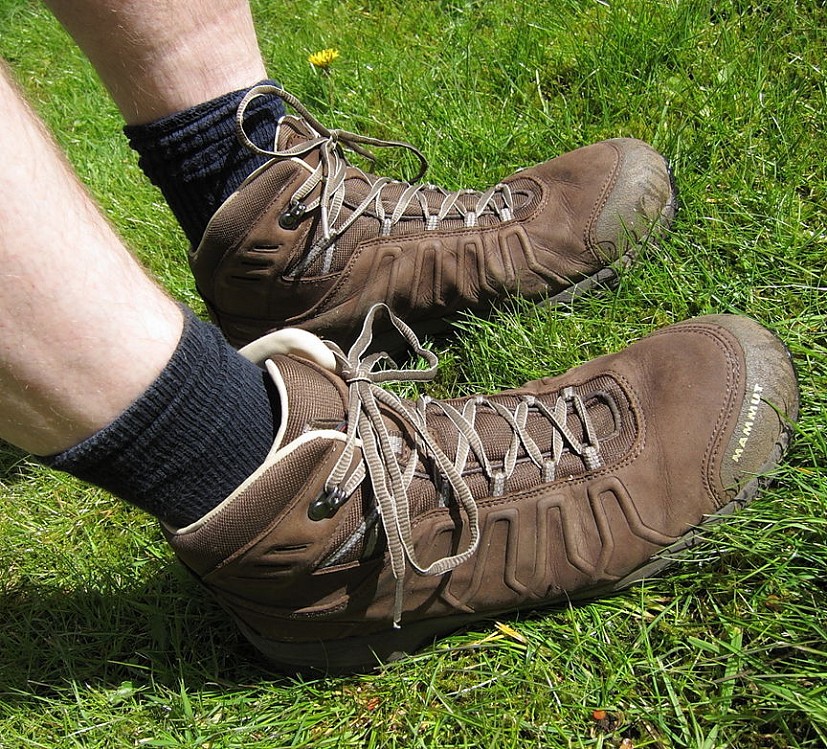
5. Sole power
Much of a boot's stiffness will be dictated by the composition of the midsole. This also has a shock absorbing role. Roughly speaking, stiffer soles give better support on rocky ground while softer soles soak up more of a pounding when walking on hard surfaces. How soft is too soft? Here's an experiment you might try. Go into one of those budget outdoor tat shops that have sprung up on every British High Street and try bending their cheapest boots. Then do the same in a decent shop. I bet you'll spot the difference. All walking boots naturally need toe-to-heel flex, and the amount you're after depends a lot on who, what and where (see above); but the soles of some budget boots may be so flaccid that you can fold the toe up into the cuff. If you want that much forward flex then buy a fell shoe. More telling still is the degree of lateral stiffness. If you can twist the sole width-ways into something resembling fusilli pasta then it's basically useless because your feet don't want to flex in that plain. A sole worth having should provide a stable supportive platform across the width of the foot, and even the least structured boot should bend noticeably less width-ways than lengthways. Too-floppy soles give an insecure footing on steep ground, which can make life scary not only on scrambles and easy rock climbs but on more challenging hillwalks too. They and can also lead to foot fatigue, or even injury.
6. Get a grip
Underneath is the outsole, the bit in contact with the ground. Winter outsoles are made with snow and ice specifically in mind, but those on a summer boot have to be more general purpose to suit everything from dry rock to peat bogs. The hardness of a sole's rubber compound is inevitably a compromise. Softer rubber gives greater friction on rock, but wears out quicker; longer-lived harder compounds can have better bite in mud or snow but don't necessarily marry well with the flex of a lighter boot. Tread patterns are many and varied too. Deeper, more aggressive lugs are welcome on soft slimy ground, while flat high-friction areas can be great for scrambling. But a sole with too much flat rubber can be slippy on wet grass, as anyone who's walked off a crag in rock shoes can probably tell you. Again be wary of budget models, which may use cheap outsoles that grip poorly in the wet.
'You get what you pay for; budget boots may prove to be a false economy'
7. Footbeds
Even the best boots can be let down by their insoles, which are typically cheap, floppy bits of foamy stuff that may provide some cushioning and sweat absorption but do little to support the foot securely in position. You don't have to settle for what you're given. Many people replace standard insoles with custom-made orthotic inserts or shop-bought pseudo-orthotic alternatives, and for anyone with foot problems (collapsey arches for instance) these are certainly worth considering. For the best fit it's often necessary to experiment with insoles, even if your feet are perfect. Unfortunately you have to pay extra for anything half decent, on top of the price of the boot itself.

8. Try before you buy
Finally, the most important point of all. Never let anything – special offers, new designs, favourable reviews – tempt you into compromising on fit. This is the primary consideration when choosing boots, and if you don't get it right then nothing else matters. It's inevitably more fiddly than just picking the nearest boot in your shoe size. Boots are built around a last, a form approximating to the shape of the human foot, and every manufacturer will use different ones. Even between different boots that are officially the same size the variation in width, length and volume can be quite striking. Some makes are known for being narrow; others may be broader but low volume, and so on. Because bootmaking isn't precision engineering even identical boots may differ in size slightly. In an ideal world we'd be able to test run various models up mountains, but since retailers won't accept used returns all we can do is try them in the shop. Give yourself several hours for this. It's best to go somewhere with several quality outdoor shops in close proximity to get a wide range of makes and models: Covent Garden, Aviemore, Keswick, Ambleside or Northern Snowdonia are the obvious places.
9. Try some more
It's best to bring your own hiking socks (all shops have spares but they may not match the thickness of those you wear on the hill). If you use orthotics then bring these too. Pick a boot and with the laces undone and your toes pushed to the end, try squeezing a finger down the heel – that's roughly how much spare length you're after. Then lace up and go walkabout. An outdoor shop worth its salt should have inclined boards to simulate hill slopes, and ideally a knobbly 'rocky' area too. Go up and down the stairs; balance on your toes; perform energetic forward lunges to see how well the boot holds your foot in place; experiment with different lacing arrangements. Then do it all over again with a different make or model. Don't feel tied to a particular shoe size; try going up or down a half or even a full size, since one make's 10 may be another's 11. When fitting winter boots it's worth accounting for the fact that you'll be wearing thick mountaineering socks by defaulting at least half a size up on your usual. However for summer footwear this isn't necessarily the best plan, but do still bear in mind that your feet will spread slightly over a long hot day in the hills.
10. And try again
Two key problems to watch out for are toe strike and heel lift, both of which do what they say on the tin. When strolling around indoors you may struggle to spot these, but out on the hill you'll know them when you feel them – by which time it's too late to get your money back. Unfortunately before it's broken in it can be very hard to appreciate how a boot will eventually feel on the hill; you just have to assume that it will soften and give a little over time. All this faff can't be hurried, so if you really must have a new pair it's best not to leave the decision til the day before your once in a lifetime trip. I can spend hours trying on every available model in a shop, not once but several times each, and still walk out with nothing. Then I might return the next day and do it some more. A decent shop will understand this, so don't feel obliged to part with cash for something imperfect.
For all UKHillwalking.com footwear reviews and news visit our gear page.


